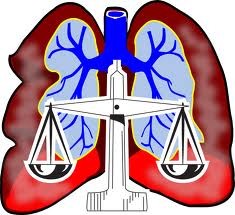Pleural Plaque
The areas of calcification on the lining of the chest wall, lungs, and diaphragm are called pleural plaques. They can be recognized as white-gray areas, and in some cases, they are also found on the lining of the ribcage in chest x-rays. As the pleura, which are the membranes surrounding the lungs, are more sensitive to asbestos, pleural plaques can develop even with very low levels of asbestos exposure.
Discover the Causes
Any exposure to asbestos irrespective of its level and duration can cause changes in the lining of the lungs and the pleura. These abnormalities include pleural plaques, pleural calcification, pleural thickening, and pleural mesothelioma.
Pleural plaques form when the inhaled asbestos fibers work their way into the outer lining of the lungs. Once they are imbedded in the pleura, these microscopic asbestos fibers cause scarring and inflammation, leading to the development of pleural plaques.
According to the National Cancer Institute, there has been an increase in the incidence of asbestos-related diseases in the United States. This can be explained by the fact that the use of Asbestos was at its peak in years 1940–1970. As the latency period for this condition is around 20 to 40 years, this condition can take quite long to be diagnosed. The industrial and commercial use of asbestos corresponded with the number of people being exposed to the substance in those years.
Symptoms of Pleural Plaques
If exposure to asbestos continues, pleural plaques can grow in size and lead to reduced lung capacity. They are usually discovered when patients suffering from symptoms such as impaired lung function, shortness of breath or tightness in chest, undergo tests such as chest x-rays and CT scans. The presence of pleural plaques has a negative psychological effect on patients once they are discovered. Though not being fatal themselves, their detection raises the likelihood of other fatal pleural abnormalities such as the pleural mesothelioma, in which there is a sudden onset of pleural effusion, dyspnea, pleural thickening and chest pain.
Know Someone with a Pleural Plaque?
Having a pleural plaque in lung are amongst the earliest signs of asbestos exposure, which has been associated with serious lung diseases such as lung cancer, asbestosis and mesothelioma, a form of cancer. Pleural plaques can even be asymptomatic, meaning that they show no signs or symptoms of being present themselves. So if you have been diagnosed with pleural plaque, it means that you have been exposed to asbestos at some point in your past. This knowledge is in itself alarming as many people are unaware that they have been exposed to asbestos in their past. According to Centers for Disease Control and Prevention, any exposure to asbestos increases the risk of developing malignant forms of cancer.In order to prevent future complications, the growth of these plaques should be closely monitored by your physician.
Obtaining Compensation for Your Suffering
If pleural plaques start affecting your ability to lead a normal life, you have the option to explore your legal rights. As most people suffering from this condition were occupationally exposed to asbestos because of the negligence of their employers, they may have grounds for filing a lawsuit against them as well as the manufacturers. Through this lawsuit, they can claim compensation for the expenses sustained as well as closure for the emotional trauma borne as well.



